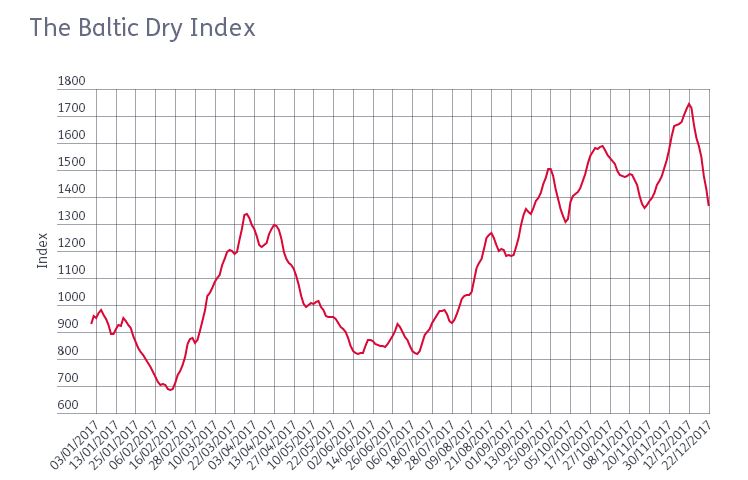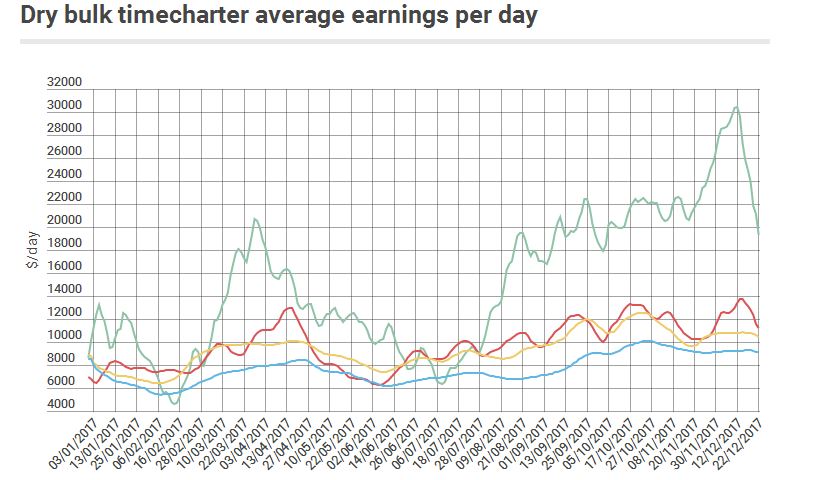Dry bulk's Recovery is Crystal Clear
THE Baltic Dry Index, a measure of shipping health, has closed 2017 at a much higher level than this time last year. the BDI ended the year at 1,366 points versus 928 points on December 22, 2016.
src="/files/fa/news/es/Thumbnails/7d68bc58-4723-4cb0-b9bc-9dd6608ea014_260_199.JPG' class='img_convert' title='Dry bulk's Recovery is Crystal Clear' alt='Dry bulk's Recovery is Crystal Clear'> 

According to MANA, driven by China's demand for raw materials such as iron ore and coal, the dry bulk market had a lot to smile about, particularly for those involved in the capesize sector.
Against the odds, China's steel production grew 5.7% to 765m tonnes between January and November, according to latest data from the World Steel Association.
And the world's second-largest economy has also been importing soybeans in increased quantities.
According to Banchero Costa, China’s consumption of soybeans is expected to grow by 7.4% to 91.3m tonnes in the 2017/18 season.
Should the demand pull continue, the dry bulk market should expect higher earnings in 2018provided fleet growth is kept at bay.
Capesize earnings topped the charts, with an average of $15,129 per day in 2017. Earnings reached an almost four-year high of $30,475 per day on December 12 and closed Friday at $19,341. That compares with $25,859 a week ago and $8,605 a year ago.
Panamaxes averaged the year earning $9,766 per day. The segment closed Friday at $11,183 per day, versus $13,421 a week ago and $6,935 a year ago, according to the Baltic Exchange.
Supramaxes, meanwhile, were not far behind, averaging the year at $9,345 per day. The vessel class closed Friday at $10,478 per day, compared with $10,817 on December 15 and $8,896 exactly a year earlier.
Handysizes scored an average of $7,636 per day through 2017, and closed out the year at $9,104 per day. That compares with $9,276 a week ago and $8,565 a year ago.